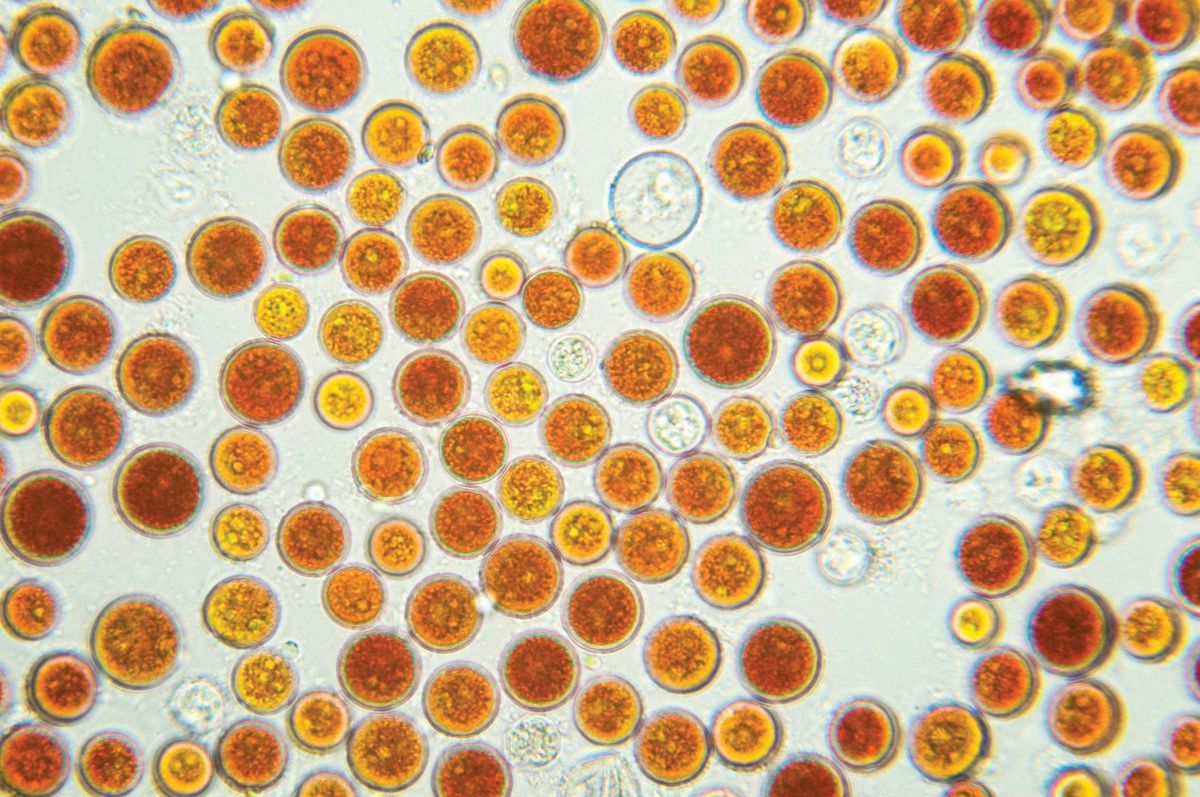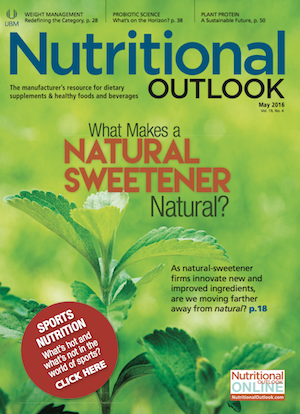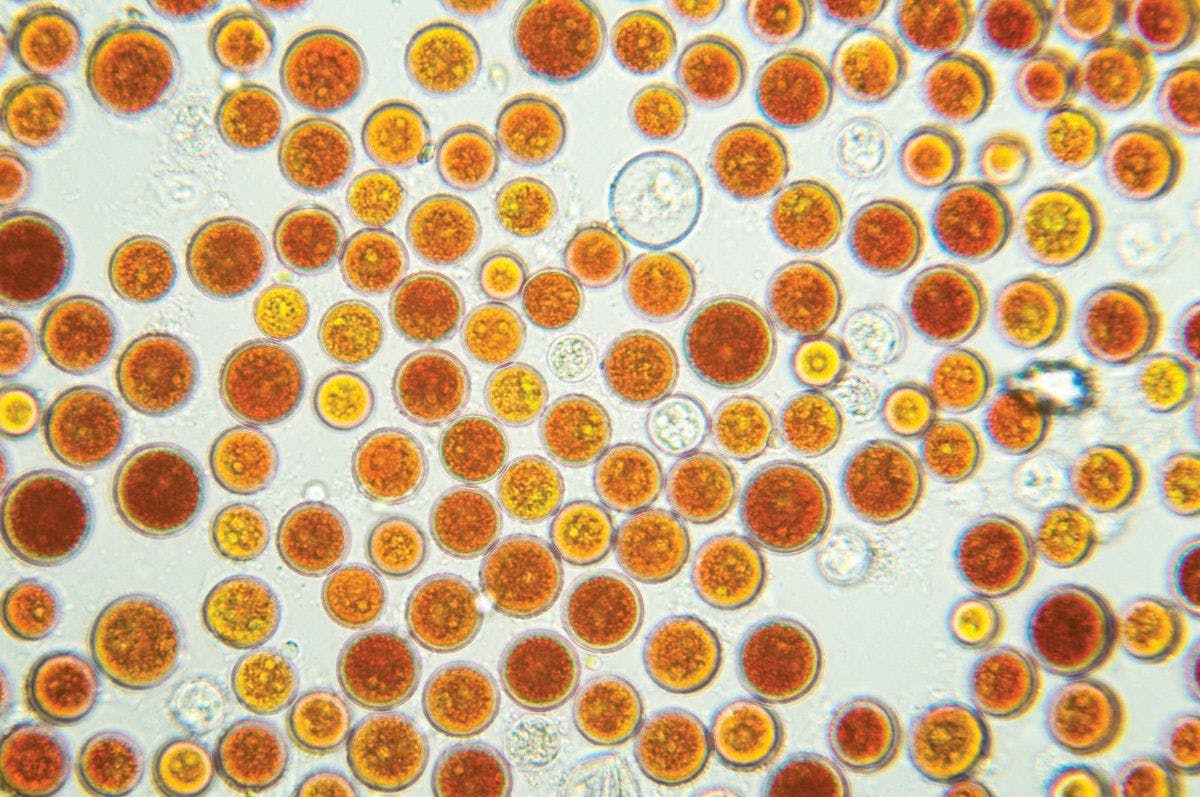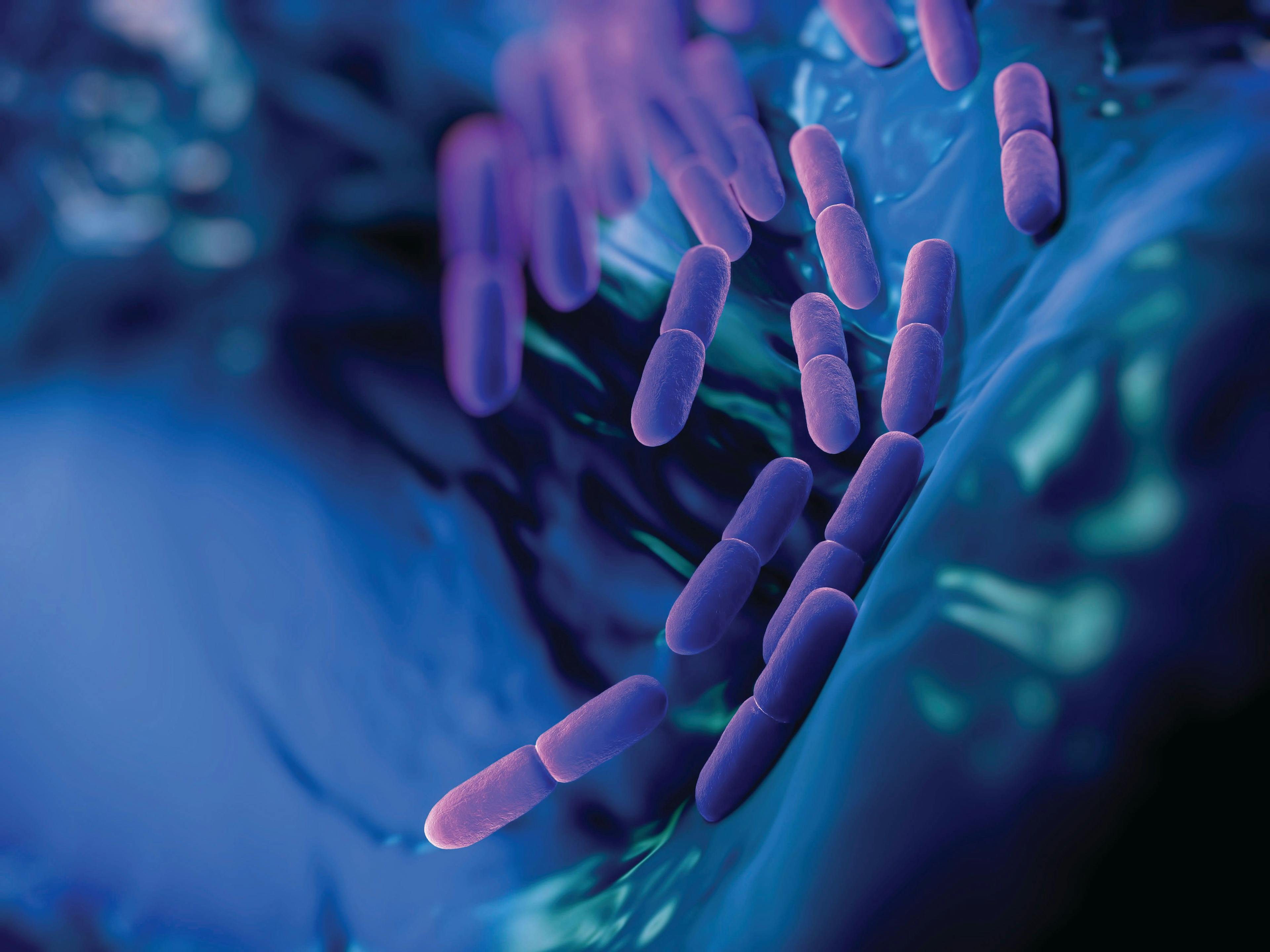Astaxanthin: New Health Promises on the Horizon?
Promising early research on astaxanthin looks toward a slew of new health areas.
Photo © iStockphoto.com/Nancy Nehring

For one of the world’s smallest organisms, microalgae pack a big punch. One freshwater species in particular, Haematococcus pluvialis, is among nature’s most abundant sources of astaxanthin-an ingredient that has climbed up the dietary supplement sales charts in recent years.
Synthetic and natural-source astaxanthin combined may account for a worldwide market value of $1.1 billion by 2020, according to a 2015 report from Research and Markets, with much of that demand coming from the nutraceutical and cosmetic markets.
Part of the growth is likely due to astaxanthin’s antioxidant benefits, as well as high-profile endorsements on The Dr. Oz show and elsewhere, but astaxanthin has also been steadily amassing a solid research profile in a variety of health areas. Microalgae-based astaxanthin is now marketed for benefits to heart health, brain health, joint health, and skin health on the strength of recent studies, and the list continues to grow.
Astaxanthin supplier AstaReal (Tokyo, Japan) recently shared some of the latest research behind its astaxanthin ingredient at the AstaReal Symposium 2016 in Tokyo. Between recently published studies and the preliminary findings of soon-to-be-published research, the diverse range of health areas covered at the symposium speaks to the remarkably broad potential of astaxanthin in the dietary supplements market. Here are a few of the most notable findings.
Insulin Resistance and NASH
Vitamin E has become one of the most well-researched ingredients for its potential beneficial effects on insulin resistance and nonalcoholic steatohepatitis (NASH)-both of which occur frequently in people suffering from obesity or type 2 diabetes. But a recent animal study1 suggests astaxanthin may be an even more effective option for these health areas.
Writing in Scientific Reports, researchers administered a variety of astaxanthin- or vitamin E–based diets to mice with diet-induced NASH for 12 weeks. Both astaxanthin and vitamin E have been found to inhibit lipid peroxidation in past research, which otherwise may lead to insulin resistance and NASH.
Researchers found that astaxanthin was more effective than vitamin E at suppressing lipid accumulation, reducing inflammation and insulin resistance, and preventing and reversing hepatic fibrosis-all of which suggest beneficial effects on NASH.
Additionally, in mice with advanced-stage NASH, astaxanthin decreased plasma triglyceride, total cholesterol, non-esterified fatty acid, aspartate aminotransferase (AST), alanine aminotransferase (ALT), and insulin levels, without affecting body and liver weight. Vitamin E, by comparison, “had little effect on these metabolic parameters.”
“Collectively, these results suggest that astaxanthin is similarly or more effective at preventing and treating NASH than is vitamin E,” researchers concluded.
Neurogenesis
Another study2, published in the March issue of Molecular Nutrition & Food Research, explores astaxanthin’s effect on adult hippocampal neurogenesis and spatial memory in mice. Though past studies have suggested astaxanthin’s potential neuroprotective effects, little was known about its effect on hippocampal plasticity and cognition.
The study involved mice whose diets were supplemented with 0%, 0.02%, 0.1%, or 0.5% astaxanthin. Using a DNA microarray analysis, researchers found that 0.1% and 0.5% astaxanthin doses improved cell proliferation and survival. Astaxanthin doses of 0.5% were also associated with higher levels of newborn mature neurons, which may be linked to enhanced spatial memory.
The researchers concluded, “[Astaxanthin] supplementation enhanced [adult hippocampal neurogenesis] and spatial memory, and a DNA microarray approach provided, for the first time, novel molecular insights into [astaxanthin] action.”
STORY CONTINUES ON PAGE 2
Vocal Cord Healing
Also at the symposium, Shigeru Hirano, PhD, shared his research into the potential benefits of astaxanthin on vocal cord injuries, including a study3 of rats that found astaxanthin may “prevent vocal fold scarring by regulating oxidative stress during the early phase of vocal wound healing,” according to the study.
For one day before and four days after vocal folds were artificially injured, rats were given either 100 mg/kg per day of astaxanthin or olive oil by oral gavage. Researchers then harvested rat larynges on days 1, 3, 5, and 56 post-injury for histological and immunohistochemical examinations. Additionally, quantitative real-time polymerase chain reaction (PCR) was conducted on the larynges on post-injury days 1 and 3.
Researchers found that expression of 4-hydroxy-2-nonenal, a marker of oxidative stress, was significantly reduced in the lamina propria connective tissue of rats consuming astaxanthin compared to olive oil. The astaxanthin group also had significantly less tissue contraction with favorable deposition of hyaluronic acid and significantly upregulated mRNA expression of basic fibroblast growth factors, compared to the olive oil group.
Hair Loss and Skin Health
Beauty is another health area where astaxanthin is showing promise, with new preliminary research supporting the ingredient’s potential for hair and skin health.
At the symposium, Hiroko Sugino, PhD, presented findings from two soon-to-be-published studies that found ingested astaxanthin paired with a topical skin cream may improve skin appearance and blood markers of oxidative stress. Between the two studies, a combined 54 women aged 20–71 took a 12-mg dose of oral astaxanthin in addition to applying a topical astaxanthin beauty cream on the face daily for three months.
Using a VISIA skin-imaging analysis device, researchers observed a reduction in brown spots and the number of pores, as well as several areas of skin improvement noted in subjective participant questionnaires. Participants also showed improvements in antioxidative activity in the blood, which may have an effect on skin health, explained Sugino.
A separate preliminary clinical trial, presented by Nalinee Sutthipisal, MD, found that astaxanthin may offer benefits to men suffering from hair loss. For 12 weeks, 15 men aged 25–65 consumed an oral astaxanthin supplement and used scalp lotion that contained astaxanthin.
Compared to baseline, researchers observed a 9.4% increase in terminal hair count at 4 weeks after beginning administration, and a 22.5% increase in terminal hair count at 12 weeks. No adverse events were reported, and there was 84.6% patient satisfaction at 12 weeks. Researchers intend to publish full findings of the study soon, according to AstaReal.
The AstaReal Symposium 2016 also featured previews of ongoing studies in even newer health applications, including sarcopenia and pet health. Where will astaxanthin go next?
Also read:
Astaxanthin Demand Continues to Grow
AstaReal Leaves NAXA Astaxanthin Association, Alleges NAXA Lack of “Extensive Quality Testing”
BGG Creates Astaxanthin Subsidiary, Gains Organic Astaxanthin Certification
New Water-Soluble Astaxanthin Expands Uses, Bioavailability
References:
- Yinhua Ni et al., “Astaxanthin prevents and reverses diet-induced insulin resistance and steatohepatitis in mice: a comparison with vitamin E,” Scientific Reports. Published online November 25, 2015.
- Yook JS et al., “Astaxanthin supplementation enhances adult hippocampal neurogenesis and spatial memory in mice,” Molecular Nutrition & Food Research, vol. 60, no. 3 (March 2016): 589–599
- Mizuta M et al., “Effect of astaxanthin on vocal fold wound healing,” The Laryngoscope, vol 124, no. 1 (January 2014): E1–7




















